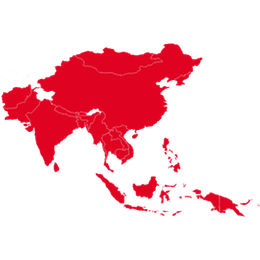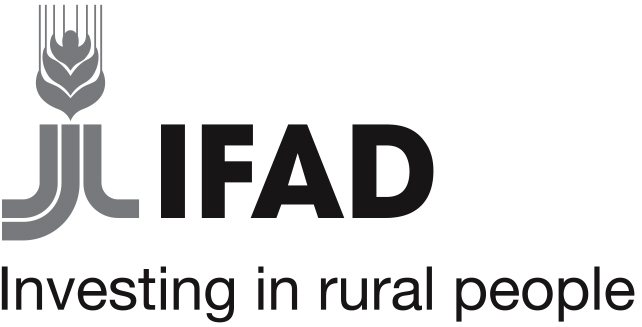Zero fish waste in Indonesia
"The project supports fishermen by helping with branding, labelling and even getting certificates from the local health authorities. In that way, the product can be sold more widely"
Max Wowiling, Marketing Consultant, CCDP ProjectBACKGROUND
Scarcity in resources, lack of know-how, no availability of modern technology and limited market access is one of the main causes of fish waste in coastal communities of Indonesia. With the support from IFAD, fishermen have reduced fish waste, improving production and quality of their catch, and accessing national and international markets.
WHAT’S INVOLVED
Access to better technologies
By providing refrigeration technologies, such as ice coolers, fishing and processing techniques more efficient and sustainable
Forming and training women’s groups
Women were trained to process some of the fish into fish paste and dried fish snacks, providing access to higher niche markets
EXPLORE THIS SOLUTION
The Zero fish waste solution can offer:
- Access to refrigeration techniques for waste reduction
- Better access to new markets
Project partners
IFAD, CCDP, KKP
Project dates
2012-2017
Share this solution
Bookmark this solution
BookmarkShow Full Solution
Summary
In Indonesia, 35 per cent of fish and seafood is lost or wasted before it is consumed, due to the long distances that separate small producers from markets. The IFAD-supported Coastal Community Development Project (CCDP) gives fisherfolks access to the technology, resources and know-how to preserve and transport their catch efficiently.
The project introduced aquaculture and other initiatives to make fishing and processing techniques more efficient and sustainable. By providing refrigeration technologies, such as ice coolers, and by forming and training women’s groups to process some of the fish into fish paste and dried fish snacks, fishermen were able to fish less, because they did not have to factor in the amount of fish wasted by lack of refrigeration or low market demand. These measures had a substantial impact on food security and actually reduced acute child malnutrition in the areas by half. And through community-based coastal resource management groups, marine resources have been maintained or improved.
Challenge/Problem
Indonesia, World’s third largest fish producing country, yields some 6 million tons of fish yearly, 67 per cent of which is marketed as fresh. Due to the chronic lack of optimal preservation and refrigeration technologies, 35 per cent of fish and seafood is often wasted, due to the long distances that separate small producers from markets where they sell their catch. Many of them lack the technology, resources and know-how to preserve and transport their catch.
Fishing communities are often poor, highly dependent on their depleting natural resources, and reliant on small-scale inshore fishing for their livelihoods. In some places, the income these communities make from fishing is insufficient to meet basic subsistence needs. Moreover, many of these communities have limited access to boats and fishing gear, they practice destructive and illegal fishing methods, manage aquaculture in a poor manner, and are vulnerable to extreme climatic events.
Solution
In over 180 villages in Indonesia, in nearly 10,000 households, the CCDP introduced aquaculture and supported initiatives to make fishing and processing techniques more efficient and sustainable. By providing rudimentary refrigeration techniques, such as ice coolers, and by forming and training women’s groups to process some of the fish into fish paste and dried fish snacks, fishermen were able to fish less because they did not have to factor in the amount of fish wasted by lack of refrigeration or low market demand. These measures also had a substantial impact on food security and actually reduced acute child malnutrition in the areas by half. And through community-based coastal resource management groups, marine resources have been maintained or improved. The community's creation of enterprise groups is the key intervention to open up economic opportunities, with the groups being "the engine" in the high-potential value chains supported by the project.
The project improved coastal resource management and fostered a market-focused approach, supporting community empowerment, through the following components:
- Making ice available and accessible to fishers, marketers and other value chain operators, which improved preservation, in particular of fresh fish. The project invested in value chain infrastructure in selected project districts, which included small ice-making plants and cold rooms to preserve fish. It also made special small insulated transport facilities available for groups of smallholders.
- Processing fish by low-cost traditional methods such as smoking and sun-drying.
- Re-processing and reuse of fish waste and fish parts resulting from initial processing activities, which were mainly reused for animal feed, further reducing waste.
- Developing different value-added fish by-products, e.g. crackers, fish balls, shredded fish (abon) and salted or smoked fish, and appropriately packaging these to increase their shelf-life and getting them to higher niche markets.
- Training on sustainable fishing practices, and on the use of appropriate gear, to reduce by-catch and fish discards.
Results
The project helped reduce poverty and improve the economic livelihoods of coastal and small island communities. In particular, the following main results can be identified:
Households’ incomes and assets. Households’ incomes and assets increased by 132 percent over the implementation period (2013-2017), with the value of marine and fisheries products sold by participating households has increased by an average of 30 per cent, compared with the pre-project level of sales. This was achieved mostly through: (i) enterprise development activities, related to fishing, aquaculture, processing, and marketing; (ii) income-generating activities related to environmental protection and promotion of eco-tourism; (iii) savings, based on the models of community-managed loan funds; (iv) financial support for the purchase of tools and equipment for fishing, aquaculture, storage, processing and marketing; and (v) job creation.
Food security. The project contributed to reducing malnutrition and improving food security in the targeted communities, with a 40 per cent reduction in the prevalence of child malnutrition. This was mostly due to an improvement in incomes, which enabled the smallholders to purchase more nutritious food. In general, fish consumed increased, due to improvements in fish processing, which reduced post-harvest losses and resulted in improvements in storability and shelf life of products. The processing and marketing of marine-base products also increased incomes of the communities, providing better access to national and international markets, through improved packaging, access to food safety standards and marketing.
Access to markets. The project facilitated access to markets in coastal communities, by (i) developing marketing strategies that identified priority products; (ii) increasing marketing awareness within enterprise groups; (iii) promoting market-oriented technology transfer; (iv) providing storage and processing facilities, and transportation; (v) facilitating linkages with sales outlets for enterprise group products; and (vi) facilitating product certification. The result is that virtually all Enterprise Groups and district level infrastructure producers are able to market their products with relative ease.
Lessons Learned/Potential for replication
Targeting. Geographical dispersion was identified at design as being a risk, making the project potentially difficult to implement and to manage with the start-up of project operations in all 12 districts. Factors that contributed to the success included: (i) a phased approach: starting implementation in only three villages per district and subsequently scaling up, allowed for lessons to be learned and risks mitigated during the first year of the project implementation; and (ii) the use of electronic and mobile applications (like WhatsApp, Facebook and Twitter) facilitated close communication, collaboration and coordination and ensured information transparency and strong local ownership.
Community engagement. Strong community commitment has been witnessed in CCDP. This can be attributed to three factors: (i) the demand-driven participatory approach to development; (ii) one community facilitator for each village; and (iii) early small-scale investments in village infrastructure.
Operational lessons. Delays at start-up were contained due to: (i) the fast recruitment of project staff and consultants; (ii) good implementation support (e.g. M&E and financial management) at the early stages; and (iii) inviting consultants that were involved in the design to the first supervision mission.
Solution Video
Solution Image
Solution Document Downloads
Last update: 03/10/2019


